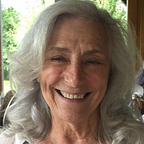Sardinia — Land of Multiple Surprises and Green Film
By Peter Belsito and Sydney Levine
Invited by the local Film Commission in Cagliari, we got an eye popping tour of this busy ever interesting society. For an island just a bit smaller than Sicily, it has a surprisingly vibrant sense of cinema with several types of film and literary festivals around the island.
The Film4Climate Film Festival, a global initiative of the World Bank’s Connect4Climate, is creating a global network to advance environmental sustainability, the inclusion of social messages in film and creative visual storytelling and green filmmaking. Its shorts have created awareness around the world and is bringing Sardinia into the world’s consciousness as it chooses green film and general ecological sustainability as its modus operandi .
Due to the great variety of landscapes, neighborhoods, ancient ruins and differing villages literally hundreds of films are shot here yearly by international crews. Hosting the first green-produced Italian TV series sustainably produced music videos as well as green cinema, Sardinia is becoming a mecca for environmentally friendly film/TV productions. In Cannes this year RaiCom was selling “L’Accabadora”, set in rural Sardinia and its largest city Cagliari during the Second World War. After strong reviews the film had sold-out screenings and achieved one of the highest screen averages in Italy on its opening weekend and played more than a month and a half. A coproduction between Dublin-based Mammoth Films and Rome’s Film Kairos earned more than €250,000 in its first weeks of release in Italy, via distributor Koch Media. MyMovies called it — ‘strongly original, with great visual and emotional impact’ and Film Idee said it was — ‘An important work, which powerfully and passionately explores territory rarely seen in Italian cinema.’
In “L’Accabadora”, Annetta keeps the inherited secret of mercy killing passed down through her mother. In her ancestral Sardinian world, she is the Accabadora: despite her young age, she is a strong woman compelled to live her life handling death under the severity of an ancient ritual. But the War is bringing deep social changes, and Annetta finds a path beyond the purgatory of her condition leading to the unexplored way of love.
Irish support for the film was provided by the Irish Film Board through its creative co-production scheme. The film was directed by Sardinian Enrico Pau and stars Donatella Finocchiarro, Irish actor Barry Ward (who learnt Italian for the role) and Sara Serraiocco. The film enjoyed its Irish premiere at the Glaway Film Fleadh last year.
Currently shooting (and crowdfunding) on the two islands of the world with the longest-living populations — Sardinia and Okinawa — is “Twin Islands” linking the two islands by their weaving traditions.
By its own initiative, the Sardegna Film Foundation launched the Heroes 20.20.20 project in collaboration with the Sardinian Regional Department of Industry (btw, the largest crude oil processing plant in Europe is in Sardinia as is a major NATO military base), the Energy Service and Sardegna Ricerche in order to promote eco-sustainable best practices at the local level by creating a new public awareness campaign to celebrate the “everyday heroes” of environmental sustainability. This is done by producing audiovisual projects that can be distributed on various platforms, including theaters, television and the internet. The productions are shot following green guidelines set by international organizations, such as PGA Green (U.S.), VAF with its e-Mission project (Belgium/ Flanders), Ecoprod (France), EcoMovie (Italy) and others.
“We moved from the radical uncertainty of Project HEROES 20.20.20 to broader national and international partnerships with the audiovisual industry and film business”, says Nevina Satta, CEO of the Sardegna Film Commission. Working with the regional departments of environmental regulatory and tourism agencies to have Sardenia’s green protocol adopted by all film and media companies in the region as well as training young eco filmmakers to achieve international visibility is the ultimate goal.
This relatively large island is midway between Europe — France, Italy, Spain — and is only 200 kilometers from Tunisia, North Africa. The weather is mild. The population is only a million and a half. Cagliari is Sardinia’s largest city, in the south; it is opposite southern Italy’s Calabria province. There is a low birthrate here compared to Italy and Europe and while the locals hate to leave, many do. Thus there are more Sardinians living abroad than live here. But those who live here love it and are contributing to the island’s green protocol.
The hillside commerce and the busy winding streets of Cagliari reminded us of Rome and the broad arched walkway on the coast brings to mind the Rue de Rivoli in Paris.
The culture struck us as a mix of Italian and Spanish, mainly in the use of words and sound of the dialect spoken. In fact the Sardinian language is closer to Latin than to Italian and closer to Spanish than Italian.
The local Film Commission is ambitious and has reached throughout Europe to entice investment and production. Using Filming Cagliari, in itself quite small when compared to that of Rome (up to 100,000 Euros cash back), when combined with its Hospitality Fund, regional coproduction fund grants, Media and Eurimages, filmmakers from around the world can actually get up to 50% cash back. Its incentives seem to have paid off judging from the many productions shooting here at any one time. The relatively large size of open landscape, varying natural environments, spectacular antiquity ruins and welcoming moderate climate has attracted much interest from all over Europe.
This cinema friendly environment will only grow in years to come.
